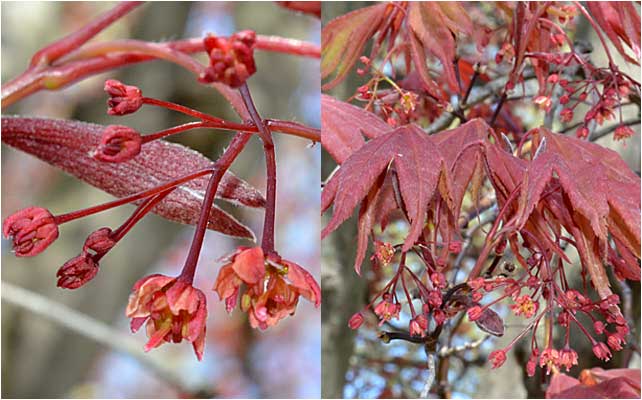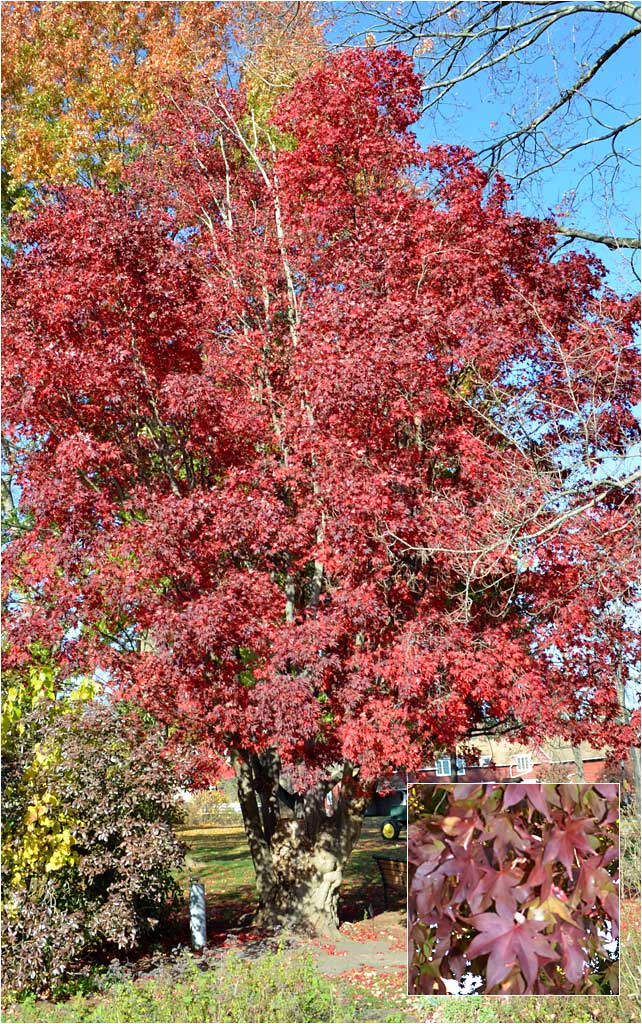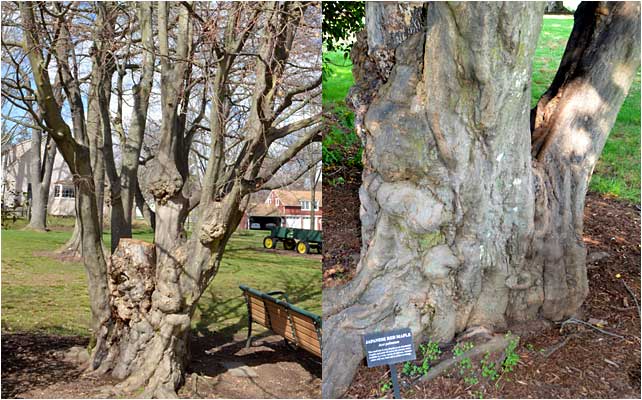17. JAPANESE MAPLE
Acer palmatum
CT Notable Tree

The Japanese Maple does not open its flower buds and leaves as early as the Red Maple, but it is still one of the welcoming signs of a new Spring. Japanese Maple flowers at the same time as it makes its leaves, while the native Red Maple begins earlier with only flowers. Nearly all maples are dioecious (male and female flowers on different trees). This is a CT Notable Tree.
JAPANESE MAPLE, FLOWER

This tree is a female, and only bears female flowers. The male Japanese Maple flowers are similar, but have longer yellow stalks protruding from the flowers. Still, remember to look close in later April to see the flowers - you can sometimes miss them because of the leaves and similar color.
SUMMER

The Japanese Maple at The Westmoor Arboretum is quite old for this species. It certainly goes back well more than 100 years, but 100 years is the high end for these maples. Its size (39 inches D.B.H. - Diameter at Breast Height) suggests an age dating back to the turn of the century. The twentieth century, not the twenty first.
FALL

The Japanese Maple is one of 4 Maple trees in a row at The Westmoor Arboretum. (Paperbark, Japanese, Red, and Sugar). This Maple Row showcases four different species of maple tree - and each provides a different color combination for fall. Maples will traditionally change color intensity during the fall season on each tree.
WINTER

Winter is a great time to study how trees are formed, and the Japanese Maple is a great example. The species typically has many vertical branches (leaders) arising from a single base. Vertical branching like this lessens the potential for snow or ice damage.
WINTER: BARK & HABIT

Chilly winter days are an excellent time to visit this old and venerable tree. It bears the scars of more than a century of living, and there have been several pruning events over the years that have helped keep the tree healthy. The bark is distinctive, and the trunk is really worth a second look.